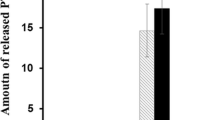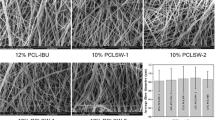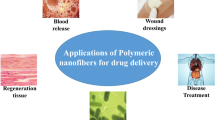Abstract
Catheterization is indispensable in the field of modern medicine. However, catheter-related thrombosis and infections almost inevitably occur during the process, and as drugs can only be administered at the end of catheter, auxiliary strategies are required for successful implantation. Considering these intractable limitations, a type of self-adaptive, anti-coagulate liquid-based fibrous catheter has been developed. More importantly, it has positional drug release property that traditional catheters desperately need but couldn’t attain. Although enlightening, the feasibility and performance of the positional drug release have only been demonstrated by fluorescents, the specific drug release kinetics remains unknown for adaptation to application scenarios. Therefore, we systematically investigate the structural and interfacial effects of drug molecules and fibrous matrixes on drug release kinetics in a liquid-based fibrous catheter. Theoretical calculations and experiments demonstrate that oleophilic and hydrophilic molecules release slowly due to a dissolution-diffusion mechanism. Amphipathic molecules, however, will significantly affect the gating performance by affecting the interfacial stability, hence they release quickly with emulsifying the gating liquid. Besides the significant impact of molecular properties and interfacial effects, matrix pore size also has a slight influence that molecules release faster in bigger pores. Through this study, the liquid-based fibrous catheter may step further toward practical applications including chemotherapy, haemodialysis, angiography, etc. to overcome the existing catheter-related limitations.
Graphical Abstract





Similar content being viewed by others
References
Singh M, Varela CE, Whyte W, Horvath MA, Tan NCS, Ong CB, Liang P, Schermerhorn ML, Roche ET, Steele TWJ. Minimally invasive electroceutical catheter for endoluminal defect sealing. Sci Adv. 2021;7: eabf6855.
Piskarev Y, Shintake J, Chautems C, Lussi J, Boehler Q, Nelson BJ, Floreano D. A variable stiffness magnetic catheter made of a conductive phase-change polymer for minimally invasive surgery. Adv Funct Mater 2022;32:2107662.
Phelan MF, Tiryaki ME, Lazovic J, Gilbert H, Sitti M. Heat-mitigated design and Lorentz force-based steering of an MRI-driven microcatheter toward minimally invasive surgery. Adv Sci 2022;9:2105352.
Oxley TJ, Opie NL, John SE, Rind GS, Ronayne SM, Wheeler TL, Judy JW, McDonald AJ, Dornom A, Lovell TJ, Steward C, Garrett DJ, Moffat BA, Lui EH, Yassi N, Campbell BC, Wong YT, Fox KE, Nurse ES, Bennett IE, Bauquier SH, Liyanage KA, van der Nagel NR, Perucca P, Ahnood A, Gill KP, Yan B, Churilov L, French CR, Desmond PM, Horne MK, Kiers L, Prawer S, Davis SM, Burkitt AN, Mitchell PJ, Grayden DB, May CN, O’Brien TJ. Minimally invasive endovascular stent-electrode array for high-fidelity, chronic recordings of cortical neural activity. Nat Biotechnol 2016;34:320.
Martens TP, Godier AF, Parks JJ, Wan LQ, Koeckert MS, Eng GM, Hudson BI, Sherman W, Vunjak-Novakovic G. Percutaneous cell delivery into the heart using hydrogels polymerizing in situ. Cell Transplant 2009;18:297–304.
Fazlali HR, Karimi N, Soroushmehr SMR, Shirani S, Nallamothu BK, Ward KR, Samavi S, Najarian K. Vessel segmentation and catheter detection in X-ray angiograms using superpixels. Med Biol Eng Comput 2018;56:1515–30.
Bahl A, Hang B, Brackney A, Joseph S, Karabon P, Mohammad A, Nnanabu I, Shotkin P. Standard long IV catheters versus extended dwell catheters: a randomized comparison of ultrasound-guided catheter survival. Am J Emerg Med 2019;37:715–21.
Eitel C, Hindricks G, Grothoff M, Gutberlet M, Sommer P. Catheter ablation guided by real-time MRI. Curr Cardiol Rep 2014;16:511.
Lee W, Nam J, Kim J, Jung E, Kim N, Jang G. Steering, tunneling, and stent delivery of a multifunctional magnetic catheter robot to treat occlusive vascular disease. IEEE Trans Ind Electron 2020;68:391–400.
Wo YQ, Brisbois EJ, Wu JF, Li Z, Major TC, Mohammed A, Wang XL, Colletta A, Bull JL, Matzger AJ, Xi CW, Bartlett RH, Meyerhoff ME. Reduction of thrombosis and bacterial infection via controlled nitric oxide (NO) release from S-Nitroso-N-acetylpenicillamine (SNAP) impregnated CarboSil intravascular catheters. ACS Biomater Sci Eng 2017;3:349–59.
Zhang S, Liang XJ, Gadd GM, Zhao Q. Superhydrophobic coatings for urinary catheters to delay bacterial biofilm formation and catheter-associated urinary tract infection. ACS Appl Energy Mater 2019;3:282.
Yu K, Amal A, Sara K, Demian F, Kymora BS, John TJC, Hossein YA, Yan M, Arshdeep G, Lily ET, Edbert Y, Dana G, Robert EWH, Ben HC, Dirk L, Jayachandran NK. Self-limiting mussel inspired thin antifouling coating with broad-spectrum resistance to biofilm formation to prevent catheter-associated infection in mouse and porcine models. Adv Healthc Mater 2021;10:2001573.
Hou Z, Wu Y, Xu C, Reghu S, Shang ZF, Chen JJ, Pranantyo D, Marimuth K, De PP, Ng OT, Pethe K, Kang ET, Li P, Chan-Park MB. Precisely structured nitric-oxide-releasing copolymer brush defeats broad-spectrum catheter-associated biofilm infections in vivo. ACS Cent Sci 2020;6:2031–45.
Zhang J, Chen BY, Chen XY, Hou X. Liquid-based adaptive structural materials. Adv Mater 2021;33:e2005664.
Howell C, Grinthal A, Sunny S, Aizenberg M, Aizenberg J. Designing liquid-infused surfaces for medical applications: a review. Adv Mater 2018;30:e1802724.
Wang LY, Zhu BH, Deng YT, Li TT, Tian QY, Yuan ZG, Ma L, Cheng C, Guo QY, Qiu L. Biocatalytic and antioxidant nanostructures for ROS scavenging and biotherapeutics. Adv Funct Mater 2021;31:2101804.
Long YP, Li L, Xu T, Wu XZ, Gao Y, Huang JB, He C, Ma T, Ma L, Cheng C, Zhao CS. Hedgehog artificial macrophage with atomic-catalytic centers to combat drug-resistant bacteria. Nat Commun 2021;12:6143.
Leslie DC, Waterhouse A, Berthet JB, Valentin TM, Watters AL, Jain A, Kim P, Hatton BD, Nedder A, Donovan K, Super EH, Howell C, Johnson CP, Vu TL, Bolgen DE, Rifai S, Hansen AR, Aizenberg M, Super M, Aizenberg J, Ingber DE. A bioinspired omniphobic surface coating on medical devices prevents thrombosis and biofouling. Nat Biotechnol 2014;32:1134–40.
Manna U, Raman N, Welsh MA, Zayas-Gonzalez YM, Blackwell HE, Palecek SP, Lynn DM. Slippery liquid-infused porous surfaces that prevent microbial surface fouling and kill non-adherent pathogens in surrounding media: a controlled release approach. Adv Funct Mater 2016;26:3599–611.
Kratochvil MJ, Welsh MA, Manna U, Ortiz BJ, Blackwell HE, Lynn DM. Slippery liquid-infused porous surfaces that prevent bacterial surface fouling and inhibit virulence phenotypes in surrounding planktonic cells. ACS Infect Dis 2016;2:509–17.
Homeyer KH, Goudie MJ, Singha P, Handa H. Liquid-infused nitric-oxide-releasing silicone Foley urinary catheters for prevention of catheter-associated urinary tract infections. ACS Biomater Sci Eng 2019;5:2021–9.
Goudie MJ, Pant J, Handa H. Liquid-infused nitric oxide-releasing (LINORel) silicone for decreased fouling, thrombosis, and infection of medical devices. Sci Rep 2017;7:13623.
Wang CY, Wang SL, Pan H, Min LL, Zheng HL, Zhu H, Liu G, Yang WZ, Chen XY, Hou X. Bioinspired liquid gating membrane-based catheter with anticoagulation and positionally drug release properties. Sci Adv. 2020;6: eabb4700.
Zhao N, Gao XH, Chen Z, Feng Y, Liu GQ, Zhou F, Liu WM. Super-lubricating hybrid elastomer with rapid photothermal sterilization and strong anti-cell adhesion. Chem Eng J 2022;434:134763.
Chen Y, Dong X, Shafiq M, Myles G, Radacsi N, Mo X. Recent advancements on three-dimensional electrospun nanofiber scaffolds for tissue engineering. Adv Fiber Mater 2022. https://doi.org/10.1007/s42765-022-00170-7 .
Liu RR, Hou LL, Yue GC, Li HK, Zhang JS, Liu J, Miao BB, Wang N, Bai J, Cui ZM, Liu T, Zhao Y. Progress of fabrication and applications of electrospun hierarchically porous nanofibers. Adv Fiber Mater 2022;4:604–30.
Huang W, Xiao YC, Shi XY. Construction of electrospun organic/inorganic hybrid nanofibers for drug delivery and tissue engineering applications. Adv Fiber Mater 2019;1:32–45.
Wang MY, Tan YL, Li D, Xu GW, Yin D, Xiao YC, Xu TG, Chen XF, Zhu XY, Shi XY. Negative isolation of circulating tumor cells using a microfluidic platform integrated with streptavidin-functionalized PLGA nanofibers. Adv Fiber Mater 2021;3:192–202.
Kobayashi M, Terayama Y, Yamaguchi H, Terada M, Murakami D, Ishihara K, Takahara A. Wettability and antifouling behavior on the surfaces of superhydrophilic polymer brushes. Langmuir 2012;28:7212–22.
Wong TS, Kang SH, Tang SK, Smythe EJ, Hatton BD, Grinthal A, Aizenberg J. Bioinspired self-repairing slippery surfaces with pressure-stable omniphobicity. Nature 2011;477:443–7.
Andreas JM, Hauser EA, Tucker WB. Boundary tension by pendant drop. J Phys Chem 1938;42:1001–19.
Hou X, Hu YH, Grinthal A, Khan M, Aizenberg J. Liquid-based gating mechanism with tunable multiphase selectivity and antifouling behaviour. Nature 2015;519:70–3.
Marenich AV, Cramer CJ, Truhlar DG. Universal solvation model based on solute electron density and on a continuum model of the solvent defined by the bulk dielectric constant and atomic surface tensions. J Phys Chem B 2009;113:6378–96.
Frisch MJ, et al. Gaussian 16 A.03, (Gaussian, Inc., Wallingford, CT, 2016).
Lu T, Chen QX, Liu ZY. A thorough theoretical exploration of intriguing characteristics of Cyclo[18]carbon: geometry, bonding nature, aromaticity, weak interaction, reactivity, excited states, vibrations, molecular dynamics and various molecular properties. ChemRxiv. 2019. https://doi.org/10.26434/chemrxiv.11320130.v2.
Zhao JW, Cui WG. Functional electrospun fibers for local therapy of cancer. Adv Fiber Mater 2020;2:229–45.
Mário César Albuquerque de Oliveira, Fernando Antonio Gomes da Silva Jr., Mateus Matiuzzi da Costa, Nikifor Rakov, Helinando Pequeno de Oliveira. Curcumin-loaded electrospun fibers: fluorescence and antibacterial activity. Adv Fiber Mater. 2020;2: 256–264.
He H, Wu MA, Zhu JW, Yang YY, Ge RL, Yu DG. Engineered spindles of little molecules around electrospun nanofibers for biphasic drug release. Adv Fiber Mater 2021;4:305–17.
Fan Y, Sheng ZZ, Chen J, Pan H, Chen BY, Wu F, Wang SL, Chen XY, Hou X. Visual chemical detection mechanism by a liquid gating system with dipole-induced interfacial molecular reconfiguration. Angew Chem Int Ed 2019;58:3967–71.
Liu H, Wang HB, Lu XH, Murugadoss V, Huang MN, Yang HS, Wan FX, Yu DG, Guo ZH. Electrospun structural nanohybrids combining three composites for fast helicide delivery. Adv Compos Hybrid Mater 2022;5:1017–29.
Yu DG, Wang ML, Ge RL. Strategies for sustained drug release from electrospun multi-layer nanostructures. Wiley Interdiscip. Rev.-Nanomed. Nanobiotechnol. 2022;14: e1772.
Simon L, Bolisetty P, Erazo MN. Dynamics of dissolution and diffusion-controlled drug release systems. Curr Drug Deliv 2011;8:144–51.
Barocas V, Drasler W, Girton T, Guler I, Knapp D, Moeller J, Parsonage E. A dissolution-diffusion model for the TAXUS drug-eluting stent with surface burst estimated from continuum percolation. J Biomed Mater Res B Appl Biomater 2009;90:267–74.
Kurnik RT, Potts RO. Modeling of diffusion and crystal dissolution in controlled release systems. J Control Release 1996;45:257–64.
Acknowledgements
This work was supported by the National Natural Science Foundation of China (52025132, 21975209, 21621091, 22021001, 22121001), the National Key R&D Program of China (2018YFA0209500), the National Science Foundation of Fujian Province of China (2022J02059), the Fundamental Research Funds for the Central Universities of China (20720220085), the 111 Project (B17027, B16029), the Science and Technology Projects of Innovation Laboratory for Sciences and Technologies of Energy Materials of Fujian Province (RD2022070601), and the Key Laboratory of Biomedical Effects of Nanomaterials and Nanosafety, CAS (No: NSKF202008).
Author information
Authors and Affiliations
Corresponding authors
Ethics declarations
Conflicts of interest
The authors declare no competing financial interest.
Additional information
Publisher's Note
Springer Nature remains neutral with regard to jurisdictional claims in published maps and institutional affiliations.
Supplementary Information
Below is the link to the electronic supplementary material.
Rights and permissions
Springer Nature or its licensor holds exclusive rights to this article under a publishing agreement with the author(s) or other rightsholder(s); author self-archiving of the accepted manuscript version of this article is solely governed by the terms of such publishing agreement and applicable law.
About this article
Cite this article
Wang, C., Hou, Y., Wang, X. et al. Structural and Interfacial Effects on Drug Release Kinetics of Liquid-Based Fibrous Catheter. Adv. Fiber Mater. 4, 1645–1655 (2022). https://doi.org/10.1007/s42765-022-00201-3
Received:
Accepted:
Published:
Issue Date:
DOI: https://doi.org/10.1007/s42765-022-00201-3




